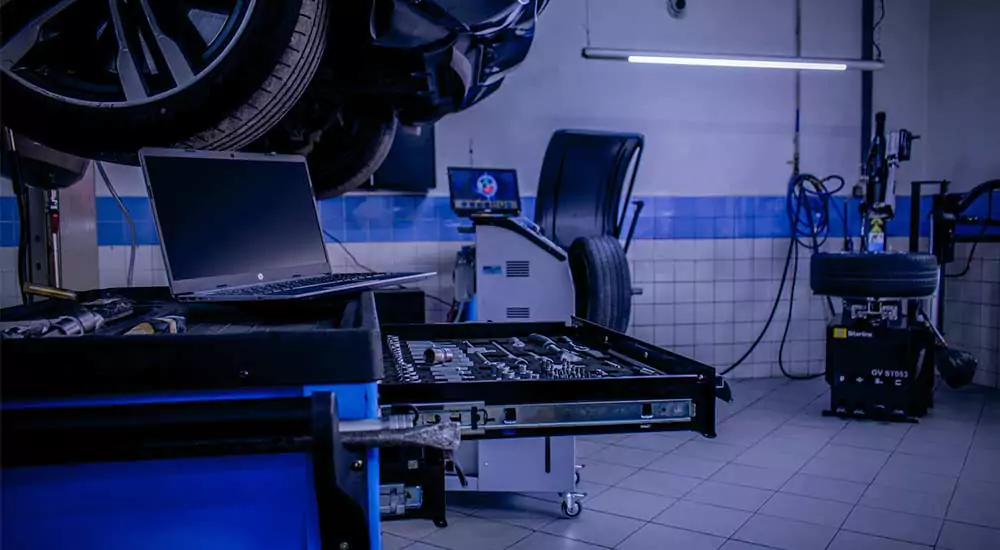When it comes to keeping your wheels rolling smoothly, a bit of regular attention goes a long way. Many drivers wait until something goes wrong before giving their vehicles a second thought. Car care 101 and some basic tips can help with this problem for many.
Yet with some basic maintenance habits, you could save yourself serious dollars and extend the life of your car substantially.
8 Ways to Keep Your Car Running Smoothly
Learn how to care for your car inside and out with tire tips, oil advice, wiper maintenance, and regular professional servicing.
8. Check Your Tires Regularly
Your tires are literally where the rubber meets the road, and they deserve more attention than most of us give them. Poor tire maintenance doesn’t just affect your fuel economy; it can be downright dangerous.
Start by checking your tire pressure monthly. Under-inflated tires create more rolling resistance, which burns extra fuel and causes uneven wear. Most service stations across Australia offer free air, so there’s no excuse not to keep them properly inflated. The recommended pressure for your vehicle can usually be found on a sticker inside the driver’s door frame or in your owner’s manual.
While you’re at it, have a good look at the tread depth. Australian law requires a minimum tread depth of 1.5mm, but safety experts recommend replacing tires once they reach about 3mm. A quick test: insert a 20-cent coin into the tread groove with the platypus facing you. If you can see the platypus’s bill, your tires need replacing.
Don’t forget to rotate your tires roughly every 10,000km. Front tires typically wear faster than rear ones, so rotation helps them wear evenly and last longer.
7. Lighting the Way
Faulty lights are illegal and unsafe. A monthly check of all your car’s lights could save you from a nasty fine or, worse, an accident.
Turn on your headlights and walk around your car to make sure both are working properly. Check your high beams, too. Then test your brake lights by reversing up to a wall at night and looking for the red reflection, or ask a mate to help.
While you are at it, don’t overlook your indicators. Blinker fluid might be a classic joke, but malfunctioning indicators are no laughing matter on busy Australian roads. A blown indicator bulb is often a simple fix you can do yourself for a few dollars, though modern LED arrays might need professional attention.
6. Keep it Clean (Basic Car Care 101)
The harsh climate can be rough on vehicles. Regular washing prevents the build-up of corrosive substances like bird droppings, tree sap, and road grime.
For exterior washing, use proper car wash soap rather than household detergents, which can strip protective wax. Start from the top and work your way down, using a separate mitt for lower panels that collect road grime. Dry with a microfibre cloth to prevent water spots, especially if you live near the coast where salt air accelerates rusting.
Inside your car, a fortnightly vacuum prevents dirt from becoming ground into carpets and upholstery. Wipe down hard surfaces with appropriate cleaners—avoid using harsh chemicals on touchscreens and leather.
A clean car preserves your vehicle’s value and creates a healthier environment for passengers. Plus, you’re more likely to notice small problems while cleaning before they become big dramas.
5. Mind Your Dashboard Warnings
Modern cars are essentially computers on wheels, and they’re constantly monitoring their health. When a warning light appears on your dashboard, it’s your car trying to tell you something.
Different colored lights indicate varying levels of urgency. Yellow or amber usually means “get this checked soon,” while red means “stop driving as soon as safely possible.” Common warning lights include the check engine light, oil pressure warning, battery alert, and tire pressure monitoring.
Don’t fall into the trap of ignoring these warnings because the car “seems fine.” That small problem could be the canary in the coal mine for a much bigger issue down the track.
4. Clear Vision in All Conditions
Your windscreen wipers and washer fluid might seem minor, but they’re crucial for safe driving, especially during dramatic downpours.
Replace wiper blades when they start leaving streaks or making noise—typically every 6-12 months in Australia’s harsh UV conditions. When topping up washer fluid, use a proper windscreen cleaner rather than just water, as it removes road grime more effectively and won’t freeze in colder regions.
While on the topic of visibility, regularly check your windscreen for small chips or cracks. What starts as a tiny star can quickly spread across your entire windscreen, especially on corrugated country roads. Many comprehensive insurance policies cover windscreen repairs at no excess, so it pays to address these issues promptly.
3. Check Your Engine Oil
Checking your engine oil is one of the simplest yet most important maintenance tasks you can perform. Low or dirty oil can cause catastrophic engine damage.
For an accurate reading, park on level ground and check your dipstick when the engine is cool. The oil should be between the minimum and maximum marks and should look relatively clean—dark but not gritty. If it’s below the minimum or looks like thick sludge, action is needed.
Most modern cars need oil changes every 10,000-15,000km, though this varies based on driving conditions and the type of oil used. Heavy stop-start driving in city traffic or dusty rural roads might necessitate more frequent changes.
2. Professional Servicing
While DIY maintenance is valuable, nothing replaces regular professional servicing. Booking your car in with a trusted local mechanic Bundaberg residents rely on makes sure that trained eyes catch potential problems before they become major repairs.
A good mechanic inspects critical safety components like brakes, steering, and suspension. They’ll also check systems that most home mechanics can’t, such as computerized engine management.
Regular servicing might seem like an expense you could put off, but it’s an investment. A well-maintained vehicle is safer, more efficient, and retains more value. It’s also far less likely to leave you stranded at inconvenient moments.
Most manufacturers recommend servicing every six months or 10,000km, whichever comes first. However, newer vehicles with sophisticated monitoring systems might have different intervals. Your owner’s manual will have the specific recommendations for your model.
1. The Little Things Add Up
Some car care habits take just seconds but pay big dividends:
- Park in shade when possible to protect your paint and interior from the harsh Australian sun
- Check all fluid levels before long trips
- Listen for unusual noises and investigate them promptly
- Keep your fuel tank at least a quarter full to prevent sediment from being drawn into the fuel system
- Consider using fuel additives occasionally to clean fuel injectors, especially in older vehicles
Read More: Best Car Accessories
Car care doesn’t need to be complicated or time-consuming.
Closing Statement: Car Care 101

By incorporating these simple checks into your routine and partnering with quality professionals for more complex maintenance, you’ll get more kilometres, more safely, from your vehicle. And with the money you save on major repairs, you might just be able to afford that road trip you’ve been dreaming about.
Related Content: How To Save For A Car





